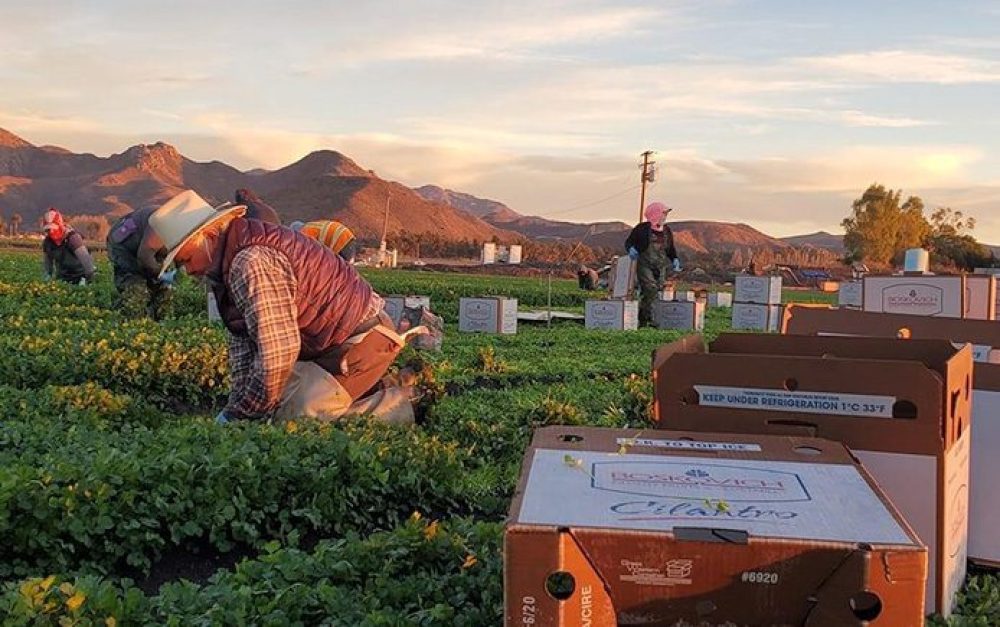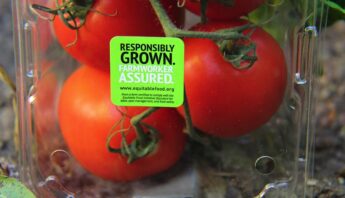PAN is joining farmworkers and farmworker advocates around the country as they celebrate National Farmworker Awareness Week (March 25 – 31). I would like to invite you to participate by putting the focus on the individuals who plant, cultivate, and harvest our food. Together, we can share and promote the continued work to eliminate a long legacy of injustice in our food and farming systems.
PAN is joining farmworkers and farmworker advocates around the country as they celebrate National Farmworker Awareness Week (March 25 – 31). I would like to invite you to participate by putting the focus on the individuals who plant, cultivate, and harvest our food. Together, we can share and promote the continued work to eliminate a long legacy of injustice in our food and farming systems. Despite decades of effective organizing, farmworkers still face inadequate legal protections with ineffective enforcement for the minimal protection they’ve won. This simply illustrates how entrenched corporate power continues to stand in the way of needed change.
The tide might be changing. Over the past two years, we’ve seen a greater public recognition of the essential value of farmworkers as well as the disproportionate impact of COVID on farmworkers and food systems workers. Acknowledging the problem is only the first step. PAN, together with partners at the state and national levels, continue our work to better protect farmworkers from exposure to hazardous pesticides. We are also aware that pesticides are only part of a larger problem and we support workers’ movements for justice within our broken food and farm systems.
California policies support farmworker communities
PAN is a proud member of the statewide California Food and Farm Network (CFFN) coalition. Last fall CFFN celebrated two policy wins. The first is a pilot grant program (AB941) to create local resource centers to provide farmworkers and their families information and services related to labor and employment rights, education, housing, immigration, and health and human services. The second bill (SB 606) improves Cal/OSHA’s ability to enforce existing worker safety laws and regulations in order to protect workers from unsafe or unhealthy working conditions. The bill also creates higher penalties for employers that violate these standards.
In addition to legislative wins, PAN works closely with such partners as the statewide Food and Farm Resilience Coalition to ensure the creation and funding of a variety of state programs aimed at creating a more equitable and resilient food and farm system. Last year we helped win $1.3 billion in allocated funds to support these goals.These funds will go toward the following:
Farmworker safety and well-being
- $100 million for a Farmworker Housing Grant Program
- $30 million for Farmworker Housing Upgrades
- $25 million for Low-Income Home Weatherization for Farmworker Housing
- $10 million for a Pesticide Notification System
Pesticide reduction programs
- $7 million for an Organic Transition Program
- $9.8 million for Biologically Integrated Farming Systems
Food assistance programs
- $352 million for Healthy Food Access Infrastructure
- $30 million for California Farm to School Incubator Grant Program
- $10 million for the California Nutrition Incentive Program
- $500,000 for the Senior Farmers Market Nutrition Program
This year, we are urging support to increase funding for farmworker housing and home weatherization (which includes HVAC systems that filter indoor pesticide contaminants) and a cell phone-based emergency notification system to alert farmworkers about hazardous heat and smoke events.
Driving on-farm practice change
Our national-level work builds on decades of farmworker organizing that targets industry, the consumer base, and elected decision-makers to change on-farm practices. For example, the 1986 precedent-setting 3-way negotiations between farmworkers, growers, and the Campbell’s Soup Company set the stage for contemporary consumer-facing market initiatives. Recent and current initiatives include the Coalition of Immokalee Workers’ Campaign for Fair Food, the boycott of Sukuma Berries, Migrant Justice’s Milk with Dignity Campaign, and the Equitable Food Initiative (EFI) of which PAN is a founding member.
While the 16-year grape boycott had arguably mixed results in terms of pesticide protections, the United Farmworkers union (UFW) reported successful elimination of some of the most toxic chemicals plaguing farmworkers and their families. In fact, most early restrictions on agricultural pesticide use resulted from negotiations in union contracts before any regulatory action took place to restrict their use. Some of that early work by the UFW can be viewed here.
Attempting to shift the marketplace
Of the current marketplace initiatives, the EFI is the only one that has, in addition to strong labor and food safety standards, a verifiable standard for pesticide risk reduction. But most important is EFI’s emphasis on workforce development which ensures worker voice and agency for fundamental change in the culture of agriculture. Since certification of its first farms in 2013, EFI’s reach includes more than 57,000 farmworkers throughout North America (plus two farm operations in Central America). But the best way to tell the EFI story is through the voice of the worker. My personal favorite in this EFI video series is Chapter 3: Building Trust and Confidence.
Workforce development at EFI starts with worker representation through the establishment of leadership teams on every EFI-certified farm. These teams help ensure continuous compliance with the full set of EFI standards. The effectiveness of these teams has been impressively demonstrated, for example, by their collective development and widespread distribution of COVID-19 resources to protect workers and their families.
Unique to the EFI is the additional requirement of full pesticide use reporting. EFI growers must also enter pesticide use data into a third-party tool to quantify pesticide risk to workers and must have a written plan to reduce pesticide use as part of an Integrated Pest Management (IPM) plan. This kind of large-scale adoption of IPM, unheard of just a few years ago, is now being embraced by some larger food buyers.
And protections from dangerous pesticides
At the federal policy level, we continue regular collaboration with a national network of farmworker and farmworker advocate organizations. With the help and support of the Coming Clean Collaborative, we have worked to ensure adequate implementation and enforcement of the federal Worker Protection Standard (WPS). This collaborative work includes continued efforts to ban the use of some of the most hazardous pesticides (e.g. the nervous system toxicant chlorpyrifos) as well as the class of organophosphate pesticides.
While we take this week at the end of March each year to specifically recognize farmworkers, our collective work to improve the lives of the hardworking folks upon whom we depend for the food we consume must be a year-round priority.
Photo courtesy of UFW








